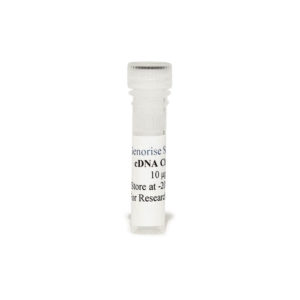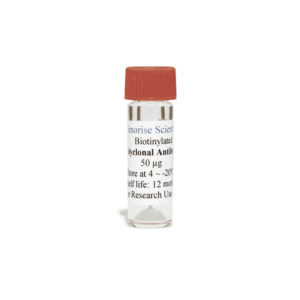Recombinant Human GLUT1 Protein
$99.00 – $2,280.00
The recombinant human GLUT1 protein is derived from in vitro expression of human GLUT1 gene in E. coli and purified using his-tag affinity column and can be used in multiple applications such as cell culture, ELISA and western blot.
Alternative names for GLUT1: Glucose transporter 1 (or GLUT1), solute carrier family 2, facilitated glucose transporter member 1 (SLC2A1),
This product is for Laboratory Research Use Only not for diagnostic and therapeutic purposes or any other purposes.
- Description
- Product Citations
- Reviews (0)
Description
Genorise Recombinant Human GLUT1 Protein Summary
Alternative names for GLUT1: Glucose transporter 1 (or GLUT1), solute carrier family 2, facilitated glucose transporter member 1 (SLC2A1),
Alternative names for bovine: cow, cattle, bull
Product Specifications
| Purity | > 97%, by SDSPAGE under reducing conditions and visualized by silver stain. |
| Endotoxin Level | < 0.1 EU per 1 μg of the protein by the LAL method. |
| Activity | na |
| Source | E. coli derived human GLUT1. |
| Accession # | P11166 |
| N-Terminal Sequence Analysis | Leu |
| Amino Acid Sequence | Leu176 –Pro271 |
| Predicted Molecular Mass | 11 kDa |
| SDS-PAGE | 11 kDa, reducing conditions |
Background:
Glucose transporter 1 (or GLUT1), also known as solute carrier family 2, facilitated glucose transporter member 1 (SLC2A1), is a uniporter protein that in humans is encoded by the SLC2A1 gene.[2] GLUT1 facilitates the transport of glucose across the plasma membranes of mammalian cells.[3] Energy-yielding metabolism in erythrocytes depends on a constant supply of glucose from the blood plasma, where the glucose concentration is maintained at about 5mM. Glucose enters the erythrocyte by facilitated diffusion via a specific glucose transporter, at a rate about 50,000 times greater than uncatalyzed transmembrane diffusion. GLUT1 is responsible for the low-level of basal glucose uptake required to sustain respiration in all cells. Expression levels of GLUT1 in cell membranes are increased by reduced glucose levels and decreased by increased glucose levels. GLUT1 is also a major receptor for uptake of Vitamin C as well as glucose, especially in non vitamin C producing mammals as part of an adaptation to compensate by participating in a Vitamin C recycling process. In mammals that do produce Vitamin C, GLUT4 is often expressed instead of GLUT1.[5] It is widely distributed in fetal tissues. In the adult it is expressed at highest levels in erythrocytes and also in the endothelial cells of barrier tissues such as the blood–brain barrier. GLUT1 behaves as a Michaelis-Menten enzyme and contains 12 membrane-spanning alpha helices, each containing 20 amino acid residues. Mutations in the GLUT1 gene are responsible for GLUT1 deficiency or De Vivo disease, which is a rare autosomal dominant disorder.[6] This disease is characterized by a low cerebrospinal fluid glucose concentration (hypoglycorrhachia), a type of neuroglycopenia, which results from impaired glucose transport across the blood–brain barrier. GLUT1 is also a receptor used by the HTLV virus to gain entry into target cells.[7] Glut1 has also been demonstrated as a powerful histochemical marker for haemangioma of infancy[8]
References
- Mueckler M, et al. (1985). Science 229 (4717): 941–5.
- Olson AL, Pessin JE (1996). Rev. Nutr. 16: 235–56.
- Montel-hagen A, et al. (2008). Cell 132 (6): 1039–1048.
- Seidner G, et al. (1998). Genet. 18 (2): 188–91.
- Manel N, et al. (2003). Cell 115 (4): 449–59.
- North PE, et al. (2000). Pathol. 31 (1): 11–22.
Product Citations
Be the first to review “Recombinant Human GLUT1 Protein”
You must be logged in to post a review.




























Reviews
There are no reviews yet.